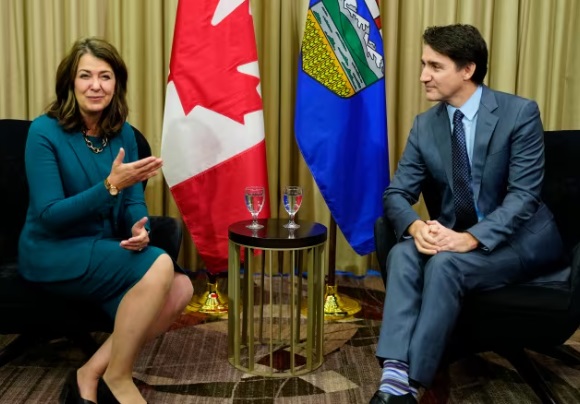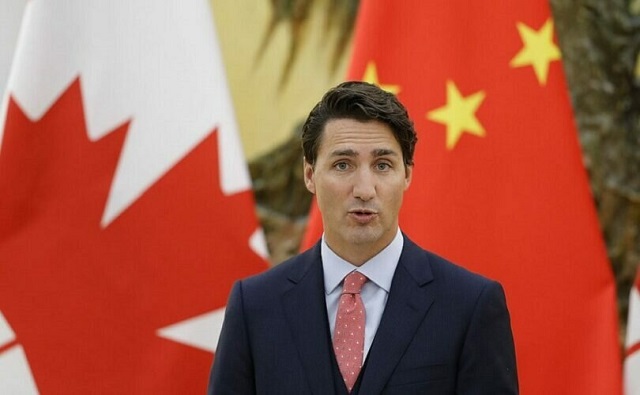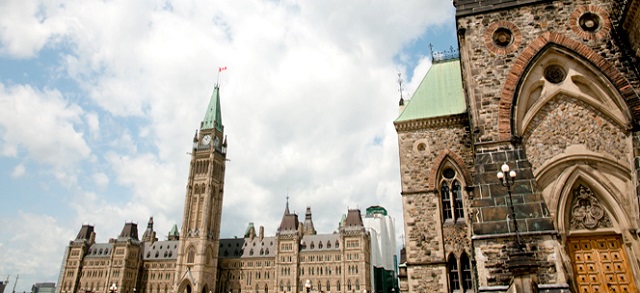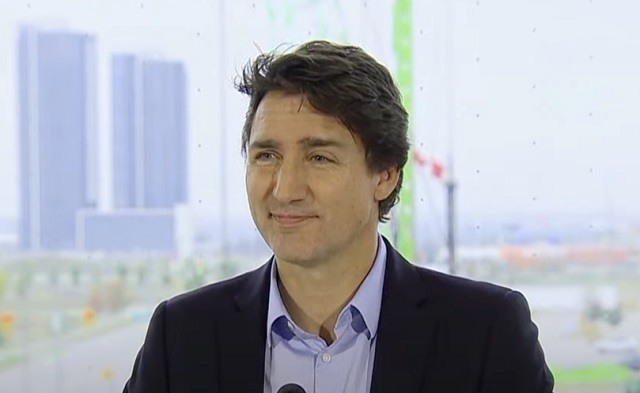Community
Tara Veer outlines position on hospital expansion, infrastructure and key priorities

The following was supplied to Todayville by Tara Veer and published on September 28:
Views on the Red Deer Regional Hospital- What is your position on the need for hospital expansion in Red Deer?
“Even though Hospital infrastructure is completely under the decision-making jurisdiction of the Provincial Government, the needs of our community are a priority for the City.
There are numerous examples over the past four years of the City strongly advocating to the Provincial Government to fulfill our local provincial infrastructure needs; The Hospital is one of them and most certainly will continue to be a priority until we secure the expansion of the Red Deer Regional Hospital.
When our City team met with various Premiers and Ministers over the past term, our consistent phrase in representing Red Deerians to the Provincial Government has been, “When you build Red Deer, you build Alberta”. Infrastructure expansion in our community not only benefits Red Deerians, but all Albertans by building service capacity. Most importantly, building capacity in the Red Deer Regional Hospital ensures patients in Red Deer and region have more equitable access to health care services closer to home instead of being forced to travel to Edmonton or Calgary, especially in critical situations.”
What has Council done to support our community in this infrastructure & service need for Red Deer?
“Over the past few years our community has raised various concerns about critical provincial infrastructure needs for Red Deer, examples include the need for expanded courthouse to fulfill community safety objectives and Polytechnic University status for Red Deer College. In response to our community, City Council adopted these as advocacy matters to add the City’s voice to our community’s concerns to the Provincial Government.
Following a public meeting initiated by local Emergency Room Doctors last winter, the people of Red Deer became acutely aware of the critical need for infrastructure and service expansion at Red Deer Regional Hospital. When the Hospital didn’t receive additional funding in the Province’s 2017 budget this past spring, many of our citizens were very upset.
In response to community concern, City Council adopted an official advocacy motion requesting the Government of Alberta to prioritize the Red Deer Regional Hospital on their capital plan. As Mayor, I have written to the Minister of Health to formally submit City Council’s position on behalf of our community. We are also currently in the process of seeking letters of support from the Mayors and Councils across the Central Zone region. Once we have received letters from all participating municipalities, we will formally add these to our submission to the Minister of Health.
I have also met and spoken with our local MLA’s and the Minister of Health regarding our community’s expectations regarding Hospital infrastructure on multiple occasions. If citizens of Red Deer would like to add their voice to our community and Council’s advocacy efforts, we encourage citizens to contact the Minister of Health and your local MLA (Kim Schreiner or Barb Miller if you live in Red Deer).”
If you’re re-elected as Mayor on October 16th, will you continue to prioritize this issue?
“Absolutely. One of the greatest leadership successes of the past term was our ability to advocate successfully for long-awaited infrastructure & service needs of Red Deer. Over the past four years alone, we have successfully helped to secure Provincial decisions to:
Keep Michener Centre open
Keep ambulance dispatch in Red Deer & area
Re-purpose the former Red Deer Nursing Home site for affordable seniors housing
Expand the runway at the Red Deer Airport
Expand the capacity at the Red Deer Courthouse
Rebuild the QE2 and Gaetz Avenue interchange
Partner with the City to integrate local affordable housing
Currently, the established advocacy priorities of Council are Red Deer Regional Hospital expansion, Polytechnic University status for Red Deer College, and emergency shelter capacity. It is essential that these areas remain a priority until these local needs are fulfilled by the Provincial Government.
Over my term as Mayor I have demonstrated myself as a strong advocate for the needs of Red Deer to decision-makers in the Provincial Government, and if Red Deerians choose to re-elect me I will continue to work with Council, our community and partners to secure results for the people of our city.
I invite you to visit my full campaign website at www.veerforreddeer.ca to learn more about my leadership record, 2017 platform, and my thoughts on issues that Red Deerians are discussing.
Community
SPARC Red Deer – Caring Adult Nominations open now!

Red Deer community let’s give a round of applause to the incredible adults shaping the future of our kids. Whether they’re a coach, neighbour, teacher, mentor, instructor, or someone special, we want to know about them!
Tell us the inspiring story of how your nominee is helping kids grow up great. We will honour the first 100 local nominees for their outstanding contributions to youth development. It’s time to highlight those who consistently go above and beyond!
To nominate, visit Events (sparcreddeer.ca)

Addictions
‘Harm Reduction’ is killing B.C.’s addicts. There’s got to be a better way

From the Frontier Centre for Public Policy
B.C. recently decriminalized the possession of small amounts of illicit drugs. The resulting explosion of addicts using drugs in public spaces, including parks and playgrounds, recently led the province’s NDP government to attempt to backtrack on this policy
Fuelled by the deadly manufactured opioid fentanyl, Canada’s national drug overdose rate stood at 19.3 people per 100,000 in 2022, a shockingly high number when compared to the European Union’s rate of just 1.8. But national statistics hide considerable geographic variation. British Columbia and Alberta together account for only a quarter of Canada’s population yet nearly half of all opioid deaths. B.C.’s 2022 death rate of 45.2/100,000 is more than double the national average, with Alberta close behind at 33.3/100,00.
In response to the drug crisis, Canada’s two western-most provinces have taken markedly divergent approaches, and in doing so have created a natural experiment with national implications.
B.C. has emphasized harm reduction, which seeks to eliminate the damaging effects of illicit drugs without actually removing them from the equation. The strategy focuses on creating access to clean drugs and includes such measures as “safe” injection sites, needle exchange programs, crack-pipe giveaways and even drug-dispensing vending machines. The approach goes so far as to distribute drugs like heroin and cocaine free of charge in the hope addicts will no longer be tempted by potentially tainted street drugs and may eventually seek help.
But safe-supply policies create many unexpected consequences. A National Post investigation found, for example, that government-supplied hydromorphone pills handed out to addicts in Vancouver are often re-sold on the street to other addicts. The sellers then use the money to purchase a street drug that provides a better high — namely, fentanyl.
Doubling down on safe supply, B.C. recently decriminalized the possession of small amounts of illicit drugs. The resulting explosion of addicts using drugs in public spaces, including parks and playgrounds, recently led the province’s NDP government to attempt to backtrack on this policy — though for now that effort has been stymied by the courts.
According to Vancouver city councillor Brian Montague, “The stats tell us that harm reduction isn’t working.” In an interview, he calls decriminalization “a disaster” and proposes a policy shift that recognizes the connection between mental illness and addiction. The province, he says, needs “massive numbers of beds in treatment facilities that deal with both addictions and long-term mental health problems (plus) access to free counselling and housing.”
In fact, Montague’s wish is coming true — one province east, in Alberta. Since the United Conservative Party was elected in 2019, Alberta has been transforming its drug addiction policy away from harm reduction and towards publicly-funded treatment and recovery efforts.
Instead of offering safe-injection sites and free drugs, Alberta is building a network of 10 therapeutic communities across the province where patients can stay for up to a year, receiving therapy and medical treatment and developing skills that will enable them to build a life outside the drug culture. All for free. The province’s first two new recovery centres opened last year in Lethbridge and Red Deer. There are currently over 29,000 addiction treatment spaces in the province.
This treatment-based strategy is in large part the work of Marshall Smith, current chief of staff to Alberta’s premier and a former addict himself, whose life story is a testament to the importance of treatment and recovery.
The sharply contrasting policies of B.C. and Alberta allow a comparison of what works and what doesn’t. A first, tentative report card on this natural experiment was produced last year in a study from Stanford University’s network on addiction policy (SNAP). Noting “a lack of policy innovation in B.C.,” where harm reduction has become the dominant policy approach, the report argues that in fact “Alberta is currently experiencing a reduction in key addiction-related harms.” But it concludes that “Canada overall, and B.C. in particular, is not yet showing the progress that the public and those impacted by drug addiction deserve.”
The report is admittedly an early analysis of these two contrasting approaches. Most of Alberta’s recovery homes are still under construction, and B.C.’s decriminalization policy is only a year old. And since the report was published, opioid death rates have inched higher in both provinces.
Still, the early returns do seem to favour Alberta’s approach. That should be regarded as good news. Society certainly has an obligation to try to help drug users. But that duty must involve more than offering addicts free drugs. Addicted people need treatment so they can kick their potentially deadly habit and go on to live healthy, meaningful lives. Dignity comes from a life of purpose and self-control, not a government-funded fix.
Susan Martinuk is a senior fellow at the Frontier Centre for Public Policy and author of the 2021 book Patients at Risk: Exposing Canada’s Health Care Crisis. A longer version of this article recently appeared at C2CJournal.ca.
-

 Alberta2 days ago
Alberta2 days agoFree Alberta Strategy backing Smith’s Provincial Priorities Act
-

 Business2 days ago
Business2 days agoUS firms like BlackRock are dropping their climate obsession while Europe ramps theirs up
-

 Automotive2 days ago
Automotive2 days agoBiden’s Kill Switch: The Growing Threat of Government Control of Your Car
-

 COVID-191 day ago
COVID-191 day agoPro-freedom Canadian nurse gets two years probation for protesting COVID restrictions
-

 espionage1 day ago
espionage1 day agoTrudeau’s office was warned that Chinese agents posed ‘existential threat’ to Canada: secret memo
-

 Economy1 day ago
Economy1 day agoMassive deficits send debt interest charges soaring
-

 International2 days ago
International2 days ago28-year-old Dutch woman to be killed by assisted suicide after doctors deem her autism ‘untreatable’
-

 International22 hours ago
International22 hours agoBrussels NatCon conference will continue freely after court overturns police barricade





